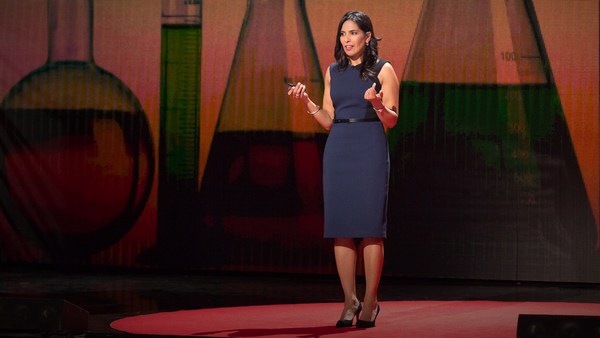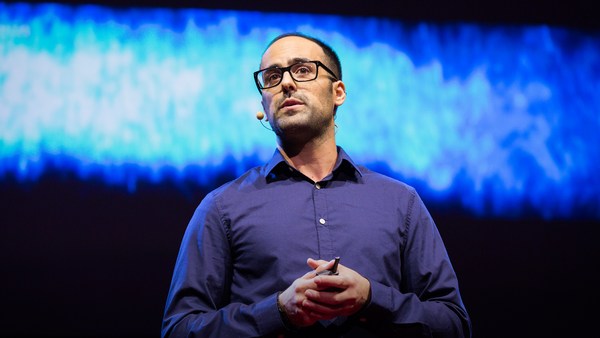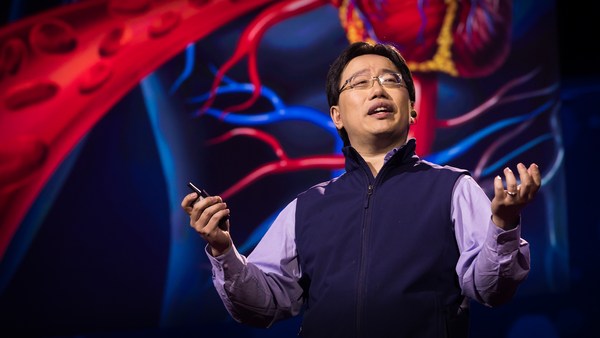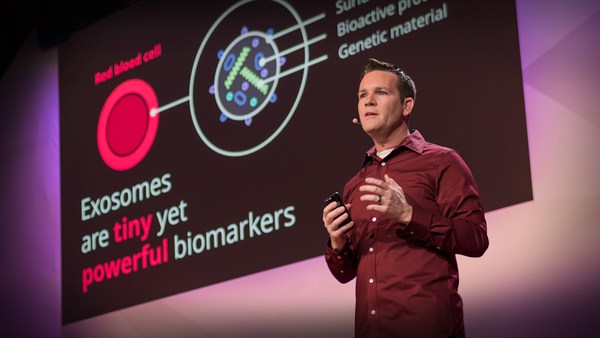By raising your hand, how many of you know at least one person on the screen? Wow, it's almost a full house. It's true, they are very famous in their fields. And do you know what all of them have in common? They all died of pancreatic cancer. However, although it's very, very sad this news, it's also thanks to their personal stories that we have raised awareness of how lethal this disease can be.
It's become the third cause of cancer deaths, and only eight percent of the patients will survive beyond five years. That's a very tiny number, especially if you compare it with breast cancer, where the survival rate is almost 90 percent. So it doesn't really come as a surprise that being diagnosed with pancreatic cancer means facing an almost certain death sentence. What's shocking, though, is that in the last 40 years, this number hasn't changed a bit, while much more progress has been made with other types of tumors. So how can we make pancreatic cancer treatment more effective? As a biomedical entrepreneur, I like to work on problems that seem impossible, understanding their limitations and trying to find new, innovative solutions that can change their outcome.
The first piece of bad news with pancreatic cancer is that your pancreas is in the middle of your belly, literally. It's depicted in orange on the screen. But you can barely see it until I remove all the other organs in front. It's also surrounded by many other vital organs, like the liver, the stomach, the bile duct. And the ability of the tumor to grow into those organs is the reason why pancreatic cancer is one of the most painful tumor types. The hard-to-reach location also prevents the doctor from surgically removing it, as is routinely done for breast cancer, for example. So all of these reasons leave chemotherapy as the only option for the pancreatic cancer patient.
This brings us to the second piece of bad news. Pancreatic cancer tumors have very few blood vessels. Why should we care about the blood vessel of a tumor? Let's think for a second how chemotherapy works. The drug is injected in the vein and it navigates throughout the body until it reaches the tumor site. It's like driving on a highway, trying to reach a destination. But what if your destination doesn't have an exit on the highway? You will never get there. And that's exactly the same problem for chemotherapy and pancreatic cancer. The drugs navigate throughout all of your body. They will reach healthy organs, resulting in high toxic effect for the patients overall, but very little will go to the tumor. Therefore, the efficacy is very limited.
To me, it seems very counterintuitive to have a whole-body treatment to target a specific organ. However, in the last 40 years, a lot of money, research and effort have gone towards finding new, powerful drugs to treat pancreatic cancer, but nothing has been done in changing the way we deliver them to the patient.
So after two pieces of bad news, I'm going to give you good news, hopefully. With a collaborator at MIT and the Massachusetts General Hospital in Boston, we have revolutionized the way we treat cancer by making localized drug delivery a reality. We are basically parachuting you on top of your destination, avoiding your having to drive all around the highway. We have embedded the drug into devices that look like this one. They are flexible enough that they can be folded to fit into the catheter, so the doctor can implant it directly on top of the tumor with minimally invasive surgery. But they are solid enough that once they are positioned on top of the tumor, they will act as a cage. They will actually physically prevent the tumor from entering other organs, controlling the metastasis.
The devices are also biodegradable. That means that once in the body, they start dissolving, delivering the drug only locally, slowly and more effectively than what is done with the current whole-body treatment. In pre-clinical study, we have demonstrated that this localized approach is able to improve by 12 times the response to treatment.
So we took a drug that is already known and by just delivering it locally where it's needed the most, we allow a response that is 12 times more powerful, reducing the systemic toxic effect. We are working relentlessly to bring this technology to the next level. We are finalizing the pre-clinical testing and the animal model required prior to asking the FDA for approval for clinical trials.
Currently, the majority of patients will die from pancreatic cancer. We are hoping that one day, we can reduce their pain, extend their life and potentially make pancreatic cancer a curable disease.
By rethinking the way we deliver the drug, we don't only make it more powerful and less toxic, we are also opening the door to finding new innovative solutions for almost all other impossible problems in pancreatic cancer patients and beyond.
Thank you very much.
(Applause)





